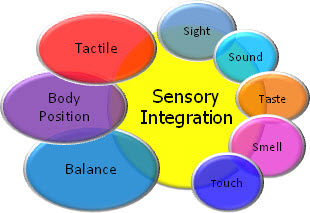
It’s difficult for most people to understand what life is like for people who have autism. How do they see the world? Why do they react to certain things? Can they see things the way I do?

Although autism is a little different for each affected individual, most people with autism process sensory information differently, and more slowly. Sensory information includes things you see, hear, feel, taste, smell, balance and body awareness. People can prioritize their senses and pay attention only to what’s important, and ignore what is not, but those with autism sometimes can’t. Autistic people can also under experience or over experience senses, like blurry vision and super sharp hearing.
When you walk into a store, you’re probably running down your to do list in your head, looking at your grocery list and pulling things off the shelf that you need. Your focus is strictly on the things that you need to do, how you navigate through the store, and getting items off of shelves. You’re ignoring the people standing the aisles, the smell of the people around you and the items on the shelf as you walk by, the sleeve of your shirt touching your arm, your shoe rubbing against your foot, the sounds of people talking, the loud speaker announcing a sale, and the constant grinding sound of the shopping cart wheels as you push it. Those are the things that might stand out to people with autism, because they can’t prioritize their senses like others. It can be hard for them to focus on accomplishing a task when they’re overloaded with sensory information. This overload can sometimes cause the brain to “crash” like a computer. This crash may appear to be temper tantrum, or the person may become still, quiet and removed from his or her surroundings.
There are many videos on the Internet that can help you understand what its life is life for people who have autism spectrum disorder. These can helpful tools in understanding what your loved ones go through, especially if they’re unable to communicate their experiences with you. Once you realize what your loved one’s sensory experiences are like, you can better understand what might cause them to get upset and help them prevent these events or help them get through it when it does occur.
Mashable.com recently posted an article with 5 simulations to help you understand how your loved ones experience the world. We encourage you to read the article and watch the simulation videos. You can see the article here: http://mashable.com/2014/04/23/autism-simulations/
If you enjoyed this blog, please share it with your friends and family and don’t forget to sign up for our newsletter. Our newsletter will not only give you access to blogs like this before everyone else, but it will also provide you with other resources and opportunities for you to get involved.

© 2025 Autism Life Link